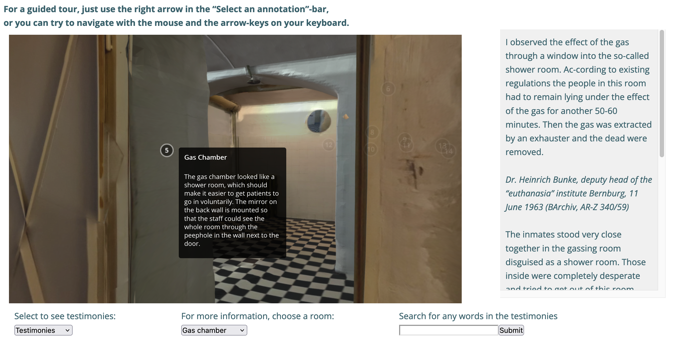Everyday life as a Ph.D. student within the Memorise project involves a multitude of tasks, both directly and indirectly linked to the project’s objectives.
A significant portion of my time is surprisingly dedicated to acquiring diverse skills essential for delivering the expected output. Notably, programming skills play a crucial role in creating digital visualizations—a process that, admittedly, can appear perplexing at times.

I’m employed at the Center for Visual Data Science, and the title of my Ph.D. is something as simple as: “Visual interface design in the context of the Memorise project (virtualization and multimodal exploration of the heritage of nazi persecution)”
The first months of my Ph.D. were spent exploring how memories of victims of Nazi persecution before and during World War II are typically presented on digital platforms. Our findings were presented in an article submitted in December. And it is not without pride that I can say that in January our paper received positive reviews along with the gratifying news that our paper was accepted for presentation at the IVAPP conference in Rome in February.
I am also co-author of an article that has been submitted to the Alliance of Digital Humanities Organizations, which is based on the outcomes of my M.Sc. thesis. The article focuses on the use of a 3D model of the Bernburg Memorial, where we examined Nazi oppression and euthanasia through different testimonies. We are still awaiting reviews of the article, but of course, we hope that it will also be accepted for presentation.

In addition to the writing, I have been working on further developing the 3D model of the Bernburg Memorial. The model is now online on the Memorise web page (https://memorise.sdu.dk/bernburg-3d-model/) and as part of the Memorise exhibition in Camp Westerbork. It should also hopefully be a part of a smaller version of the Memorise Exhibition in Bernburg this year, but for that, we are about to make a version that runs independently of the internet.
As a Ph.D. student, I also have obligations beyond the Memorise project. One of those obligations is teaching, and so this fall season I became a teaching assistant for a Digital Humanities course – an exciting course for humanities students. I had to familiarize myself with several data analysis tools that I didn’t know beforehand, but it was both educational and fun.
In conclusion, my journey as a Ph.D. student involves a dynamic blend of research, collaboration, and skill development, both within and beyond the Memorise project. I don’t know where the first 5 months disappeared, and when I look at it that way, 3 years doesn’t seem like a long time – it may actually seem like a really short amount of time.
Camilla Vang Østergaard



5 Responses
Thanks for sharing. I read many of your blog posts, cool, your blog is very good.
Thanks for sharing. I read many of your blog posts, cool, your blog is very good.
😉
Your article helped me a lot, is there any more related content? Thanks!
Sure! As this is an ongoing project, we are adding results step-by-step. You can find finished content under “Results” here on the website.
Some insights into work-in-progress content can be seen on social media. You can find us on e.g. LinkedIn (https://www.linkedin.com/company/93621282/admin/feed/posts/), Instagram (https://www.instagram.com/memorise_eu/), Threads (https://www.threads.net/@memorise_eu), and X (https://twitter.com/MEMORISE_EU).
Znovu ho navštívím, protože jsem si ho poznamenal.